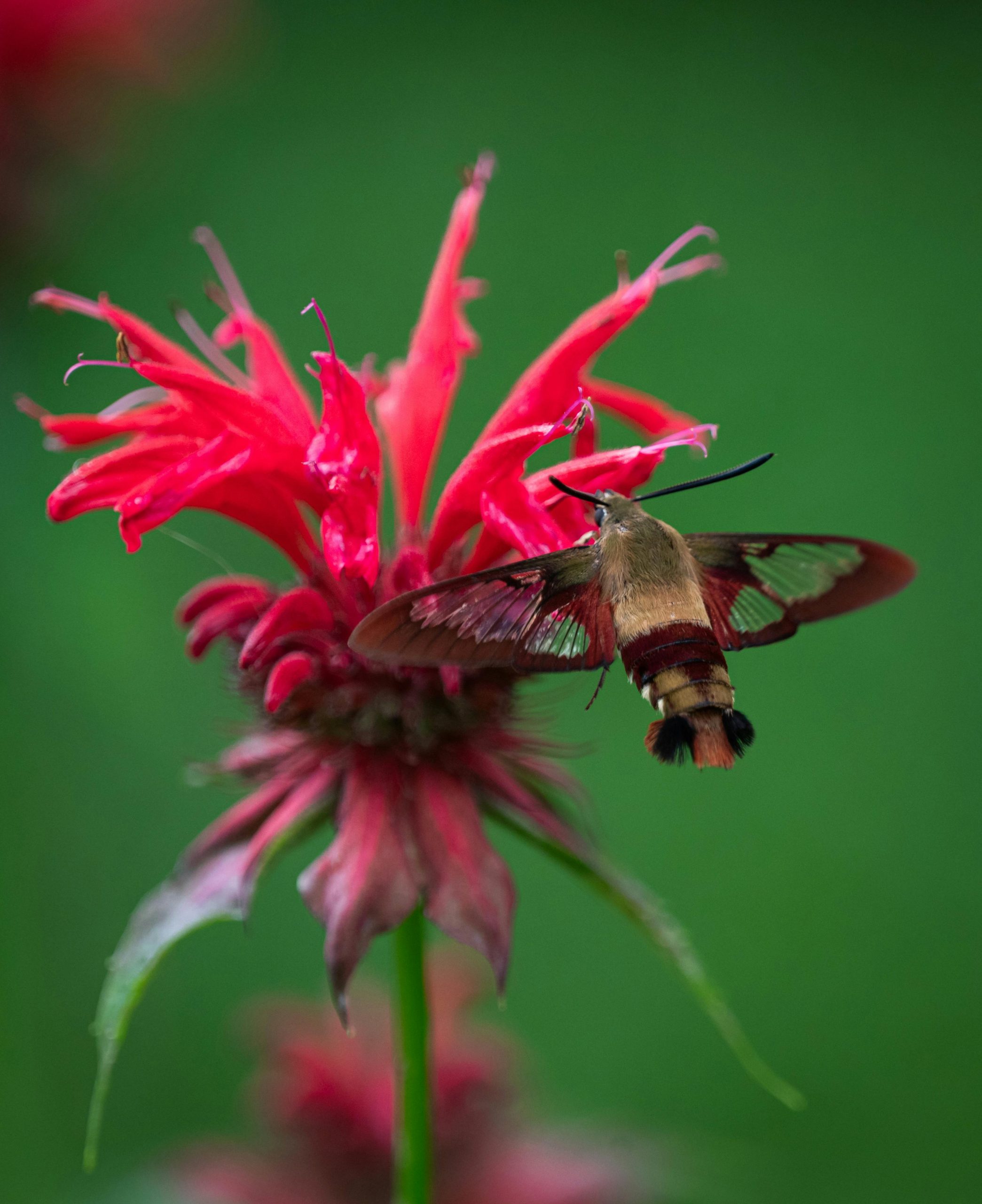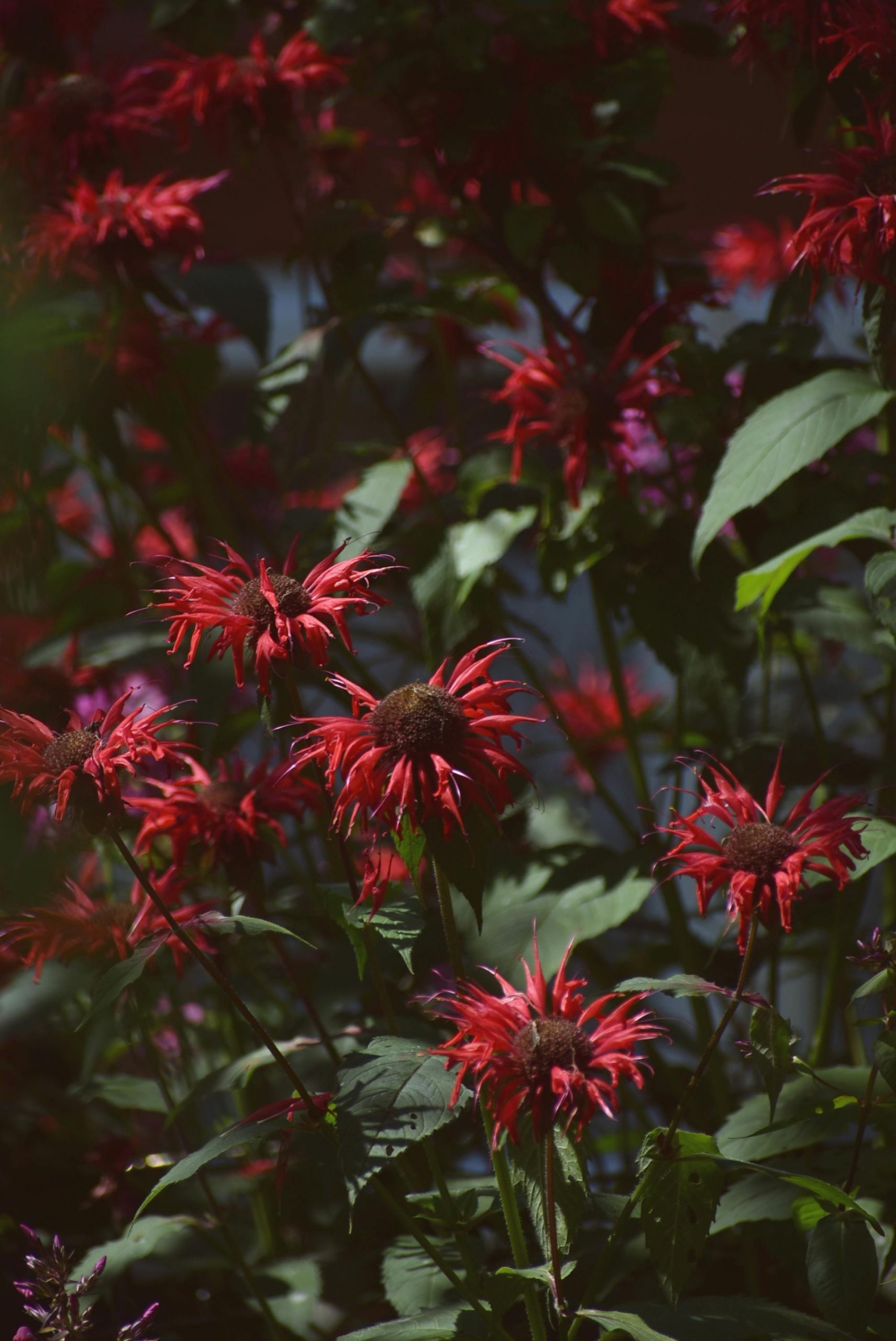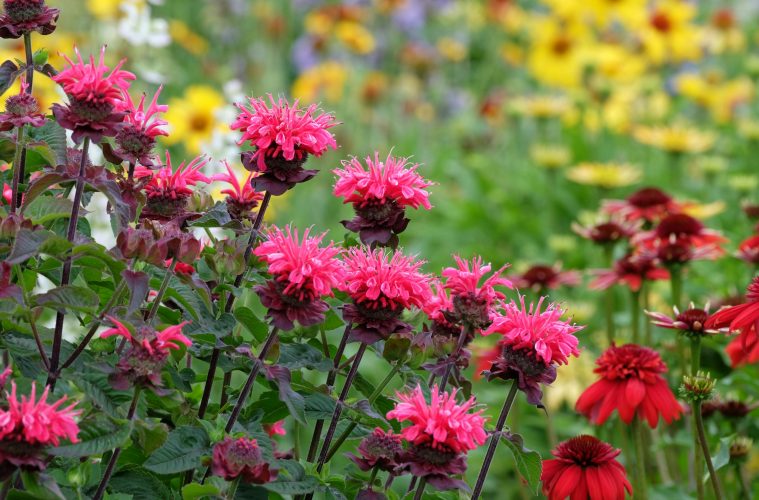This vibrant, summer-blooming flower is the perfect fragrant addition to your garden. It spreads quickly and thrives in various conditions, making it a valuable resource for any local wildlife visiting your garden.
This perennial belongs to the mint family, growing in colourful chunks of red, pinkish or even lavender. They big, colourful flowers spread throughout your garden when in bloom, providing a haven for attracting pollinators. The plant’s leaves and flowers can also be used to make medicinal herbs.
Growing bee balm
Bee balm plants will not do well in drought-prone locations, as this might cause the growing plant to wilt. Try finding a suitable location with afternoon shade. Certain varieties of bee balm thrive better when grown in containers, allowing you to fully appreciate their tubular blooms. Ensure that the containers have good drainage. In addition to proper soil and location for your plants, it’s also important to maintain appropriate humidity levels.
These perennials will appreciate consistently moist soils throughout the growing season. Although they can withstand brief periods of drought, make it a habit to water the plants to avoid experiencing any wilting during hot weather. With growing conditions met, knowing when to plant is another vital thing you need to get correctly. If you’re putting in new bee balm plants, do so after the last winter frost.

Image Credit: Pexels
Basic plant care
Once your perennials are established, caring for them is relatively straightforward. They hardly need attention from you beyond planting the planting period. Some bee balm species may grow tall and require additional support. The main things gardeners need to be wary of are pests, diseases and managing the plants’ growth. Pruning is required to control the growth of the plant. Deadheading the plants will encourage more blooms when your plant is fully established.
Prune by making certain cuts just above the nearest set of healthy leaves. In their plants’ growing phases, you also need to worry about pesky plant diseases. As the bee balm plant is susceptible to powdery mildew, it produces powdery dust on the buds and leaves in moist, cool weather. Minor instances of powdery mildew may not lead to the loss of your plant.

Image Credit: Pexels
ALSO SEE: COMBAT WINTER CHILLS: DISCOVER THE COMFORT OF A QUALITY DUVET
Combat winter chills: Discover the comfort of a quality duvet
Feature Image: Pexels

